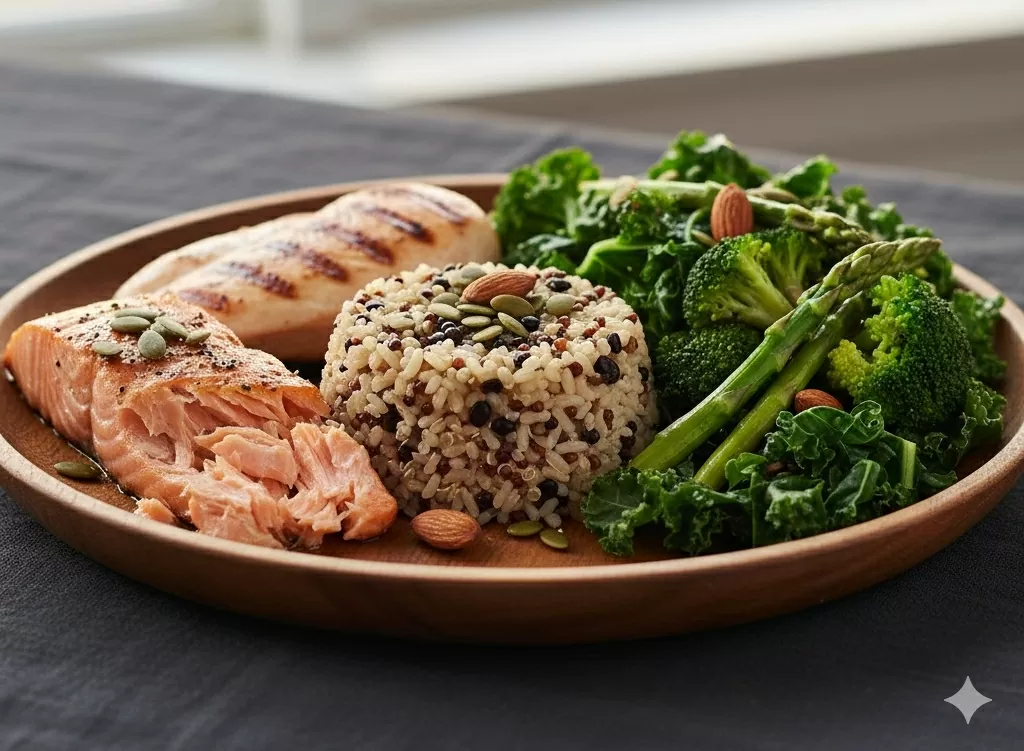 |
| Dinner with 3 groups of protein, vegetables and raw starch adds fiber, keeps blood sugar stable, and prevents fat from accumulating in the blood vessels. (Illustration photo created by AI) |
Hyperlipidemia is a disorder of lipid metabolism, increasing the risk of cardiovascular complications, stroke and acute pancreatitis. To prevent it, it is necessary to maintain a healthy diet, increase physical activity, have regular health check-ups and avoid risk factors such as alcohol and tobacco.
Studies show that patients with high blood fat have a 2-3 times higher risk of cardiovascular and cerebrovascular events than those without the disease.
And for every 1 mmol/L reduction in blood lipids, the risk of cardiovascular and cerebrovascular events can be reduced by 20%.
The good news is that high cholesterol can be reversed in its early stages. These four simple steps are easy to follow and only take 30 minutes a day to achieve significant results.
Walk briskly 30 minutes a day
Brisk walking is a moderate-intensity aerobic exercise that can effectively increase HDL ( the “good” cholesterol) levels and decrease LDL (the “bad” cholesterol).
Additionally, walking is one of the simplest and best ways to aid weight loss. It helps burn calories, boost metabolism, and maintain lean muscle mass – all of which contribute to fat loss.
Dinner includes 3 groups of protein, vegetables and raw starch
Experts recommend building dinner according to the "3-part" principle, including one part high-quality protein (fish, tofu, chicken breast), one part dark green vegetables (broccoli, spinach, celery) and one part coarse starch such as brown rice, oatmeal or sweet potatoes.
This way of eating helps to add fiber, keep blood sugar stable, and prevent fat from accumulating in the blood vessels. The key point is to avoid sugary drinks such as milk tea, carbonated soft drinks, or bottled juice, as they can easily increase the burden on the blood vessels.
Stand up and walk around for 5 minutes every hour
Sitting for long periods of time is considered a “silent culprit” that increases the risk of dyslipidemia. Just sitting for one hour continuously can reduce the rate of blood lipid metabolism by up to 20%.
To overcome this, office workers should stand up to get water, go to the toilet or stretch for 5 minutes after every hour of work. When traveling, you can get off the bus one stop early to walk for 10 minutes and in your free time, take a walk for about 20 minutes after meals.
Research shows that people who sit more than 8 hours a day have a 35% higher risk of high blood fat than those who sit less than 4 hours.
Strength train twice a week
Experts say that increasing muscle mass helps increase basal metabolic rate, thereby helping the body metabolize fat more effectively.
Just maintain 2 training sessions per week, about 20 minutes each time, with simple movements such as squats, push-ups or resistance band exercises. Each exercise should be performed 12-15 times, repeated 3 sets for optimal results.
Source: https://baoquocte.vn/bon-buoc-don-gian-day-lui-mo-mau-sau-30-phut-moi-ngay-326682.html


![[Photo] Prime Minister Pham Minh Chinh chairs the Government's online conference with localities](https://vphoto.vietnam.vn/thumb/1200x675/vietnam/resource/IMAGE/2025/10/5/264793cfb4404c63a701d235ff43e1bd)



![[Photo] Prime Minister Pham Minh Chinh launched a peak emulation campaign to achieve achievements in celebration of the 14th National Party Congress](https://vphoto.vietnam.vn/thumb/1200x675/vietnam/resource/IMAGE/2025/10/5/8869ec5cdbc740f58fbf2ae73f065076)









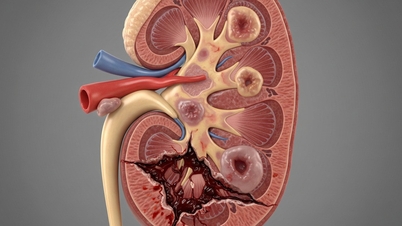

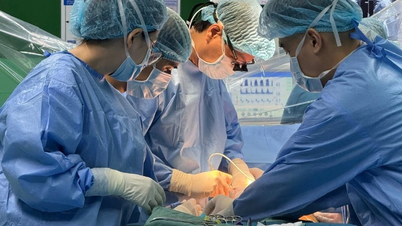

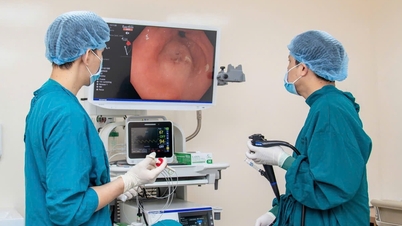
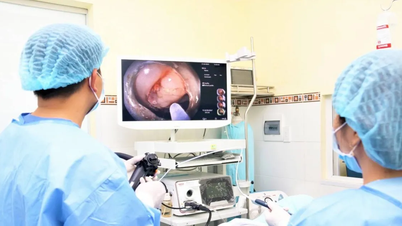




































![[VIDEO] Summary of Petrovietnam's 50th Anniversary Ceremony](https://vphoto.vietnam.vn/thumb/402x226/vietnam/resource/IMAGE/2025/10/4/abe133bdb8114793a16d4fe3e5bd0f12)

![[VIDEO] GENERAL SECRETARY TO LAM AWARDS PETROVIETNAM 8 GOLDEN WORDS: "PIONEER - EXCELLENT - SUSTAINABLE - GLOBAL"](https://vphoto.vietnam.vn/thumb/402x226/vietnam/resource/IMAGE/2025/7/23/c2fdb48863e846cfa9fb8e6ea9cf44e7)





































Comment (0)